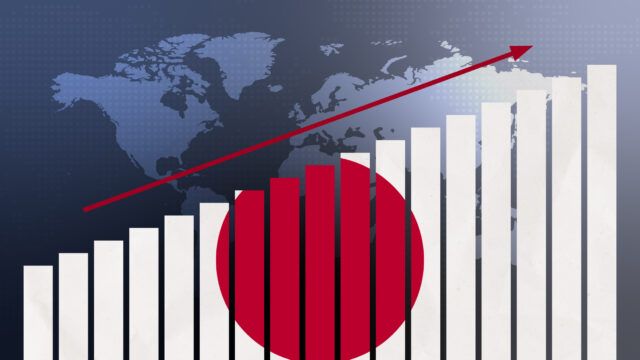Investors hoping for another year of Japanese equity market outperformance might need to start taking a more selective approach to stock picking after a broad market rally.
Japanese equities have rallied significantly over the past 12 months: the MSCI Japan index is up over 46%, or 28% in US dollar terms over the past year.
Oliver Lee, a client portfolio manager at Eastspring investments, said that while the long-term investment case is still intact, investors shouldn’t expect another consecutive year of outperformance.
“People with a medium- to long-term view should be okay, but maybe the easy money has been made,” he told FSA. “I don’t think the market is going to carry on going up at 30% per year.”
Lee said the market has evolved over the past few years as global investors start to realise the benefits of the corporate governance reforms underway in Japan.
He said: “Two years ago, the market still felt quite bifurcated. Value still wasn’t properly priced and growth was still quite expensive. But in the last couple of years, we’ve seen a bit more normalisation.”
“If I look at positioning today, we have a bit more diversification at a sector level than we did a couple of years ago. I think normalisation is healthy and it’s good for stock picking, whether you’re a growth investor or a value investor.”
Looking for stocks where the market is pessimistic
As a contrarian value strategy, Lee said his firm’s Eastspring Japan Dynamic fund benefitted from its overweight in automobile stocks and banks – both of which have rallied hard alongside the broader Japanese equity market.
As such, Eastspring Japan Dynamic has delivered top-quartile returns compared with its peers over the past three years, which Lee credits largely to its value investing approach.
The investment process focuses on finding companies that are trading more than one standard deviation below their historical average, Lee explained.
“We’re looking for companies where there has been a de-rating, but over three to five years we believe earnings will recover back to a long-term trend level, and we’re willing to be patient for that to take place,” he said.
“Everything we build is from bottom-up. We normally have around 35 to 45 stocks, and they all have independent idiosyncratic risk, where we believe that markets are getting that longer term earning stream wrong.”
However, he doesn’t appear to believe markets are wrong on what seems to be a consensus bullish outlook for Japanese equities.
The long-term case for Japanese equities
Lee said: “The longer-term investment case is predicated on three things: firstly, a move away from deflation towards inflation, secondly, corporate governance reforms leading to hopefully better profitability at the company level, and thirdly there is a stronger narrative around capex.”
“In the last 20 years companies in Japan haven’t been great at investing — the willingness hasn’t been there – but as we talk to CEOs and CFOs today, there seems to be a stronger conviction around investing for the future.”
“Also, I think Japan is pretty well placed for friend-shoring, re-shoring and also to benefit from some of the geopolitical tension between the US and China.”
Where the client portfolio manager does take a different view to the wider market can be seen in how the fund is positioned.
Over the past 12 months the strategy has taken profits in autos and banks – the winners of the past year – and redeployed that cash into other areas of the market that have been lagging the wider index.
He cited certain materials and chemical stocks, which have been a bit weak in the last six months, as examples.
One sector that the fund has been underweight for quite some time has been technology, Lee revealed.
He pointed to the overhyped narrative surrounding artificial intelligence and semiconductor stocks, of which there are several key players listed in Japan.
“There are some good companies in that space in Japan, but they trade on pretty rich multiples,” Lee said. “As a value orientated contrarian investor, we don’t chase momentum.”
“We don’t invest in growth stocks, and some of these stocks are on 80 times forward earnings: good companies that trade on pretty full multiples in our view.”

















